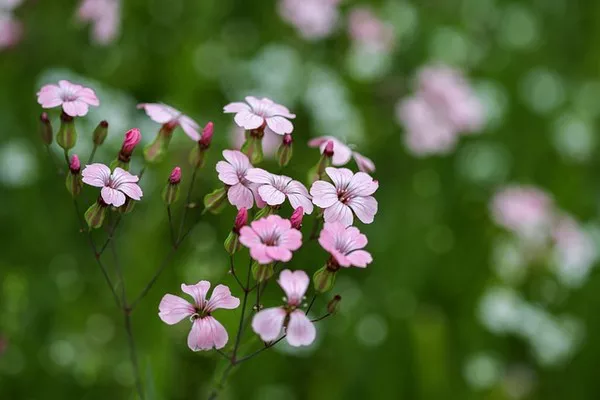Slugs, those slimy little creatures, can wreak havoc on your carefully cultivated garden, especially when it comes to your delicate flowers. If you’ve ever woken up to find your prized blooms decimated overnight, you know the frustration of dealing with these voracious pests. But fear not! With a combination of preventative measures and targeted interventions, you can protect your flowers and reclaim your garden from the clutches of slugs.
Understanding the Enemy: The Habits and Preferences of Slugs
Before diving into strategies for slug control, it’s important to understand your adversary. Slugs are gastropod mollusks, belonging to the class Gastropoda, and they thrive in moist environments. They are nocturnal creatures, preferring to feed at night or during periods of high humidity, which is why you may often find evidence of their presence in the early morning.
Slugs are particularly attracted to tender, succulent plant tissues, making your flowers a prime target for their feeding frenzy. They have rasping mouthparts called radulas, which they use to scrape away plant material, leaving behind a telltale trail of slime.
Preventative Measures: Creating a Slug-Unfriendly Environment
One of the most effective ways to deal with slugs is to make your garden less inviting to them in the first place. Here are some preventative measures you can take:
Maintain Good Garden Hygiene: Keep your garden clean and tidy, removing any debris or hiding spots where slugs may seek shelter during the day. Regularly clear away fallen leaves and decaying plant matter.
Reduce Moisture: Since slugs thrive in moist environments, reducing excess moisture in your garden can help deter them. Avoid overwatering your plants, and ensure good drainage to prevent water from pooling.
Mulch Strategically: While mulch can help conserve moisture and suppress weeds, certain types of mulch, such as straw or wood chips, can also provide hiding places for slugs. Opt for materials like gravel or crushed eggshells, which are less hospitable to slugs.
Encourage Natural Predators: Introducing natural predators of slugs, such as ground beetles, to your garden can help keep their population in check. You can attract these beneficial insects by planting diverse native species and providing shelter, such as rocks or logs.
Install Barriers: Creating physical barriers around susceptible plants can prevent slugs from reaching them. Use materials like copper tape or diatomaceous earth around flower beds or individual plants to create an impassable barrier for slugs.
Targeted Interventions: Controlling Slugs with Safe and Effective Methods
Despite your best efforts at prevention, you may still find yourself facing a slug infestation in your garden. When this happens, it’s important to take swift and decisive action to protect your flowers. Here are some targeted interventions you can employ:
1. Handpicking:
One of the simplest and most environmentally friendly methods of slug control is handpicking. Simply go out into your garden at night with a flashlight and pluck slugs off your plants by hand. Dispose of them by either relocating them to a distant location or placing them in a container of soapy water to drown.
2. Beer Traps:
Slugs are attracted to the scent of yeast, making beer traps an effective method for luring them away from your flowers. Bury a shallow container, such as a tuna can, in the soil near your plants and fill it with beer. Slugs will be drawn to the beer and drown in the liquid.
3. Natural Repellents:
There are several natural substances that repel slugs and can be applied to your plants as a deterrent. Sprinkling crushed eggshells, coffee grounds, or coarse sand around the base of your flowers can create a barrier that slugs are reluctant to cross.
4. Biological Controls:
Biological controls, such as nematodes or certain species of bacteria, can be effective in reducing slug populations without harming other garden organisms. These natural predators specifically target slugs and can be applied to the soil or foliage of your plants.
5. Commercial Baits and Traps:
If all else fails, you can turn to commercial slug baits and traps available at garden centers. These products contain attractants and toxins that lure slugs in and kill them. Be sure to follow the manufacturer’s instructions carefully and use these products judiciously to minimize harm to other wildlife.
Maintaining Vigilance: Consistent Monitoring and Adjustment
Controlling slugs in your garden is an ongoing process that requires vigilance and adaptability. Regularly monitor your plants for signs of slug damage and adjust your control measures as needed. By staying proactive and employing a combination of preventative strategies and targeted interventions, you can keep your flowers safe from the ravages of slugs and enjoy a beautiful garden all season long.
Conclusion
In conclusion, while slugs may seem like formidable adversaries, they can be effectively managed with the right approach. By understanding their habits and preferences, implementing preventative measures, and employing targeted interventions, you can stop slugs from eating your flowers and reclaim your garden as a sanctuary of beauty and tranquility. So roll up your sleeves, gather your gardening tools, and let’s show those slugs who’s boss!


